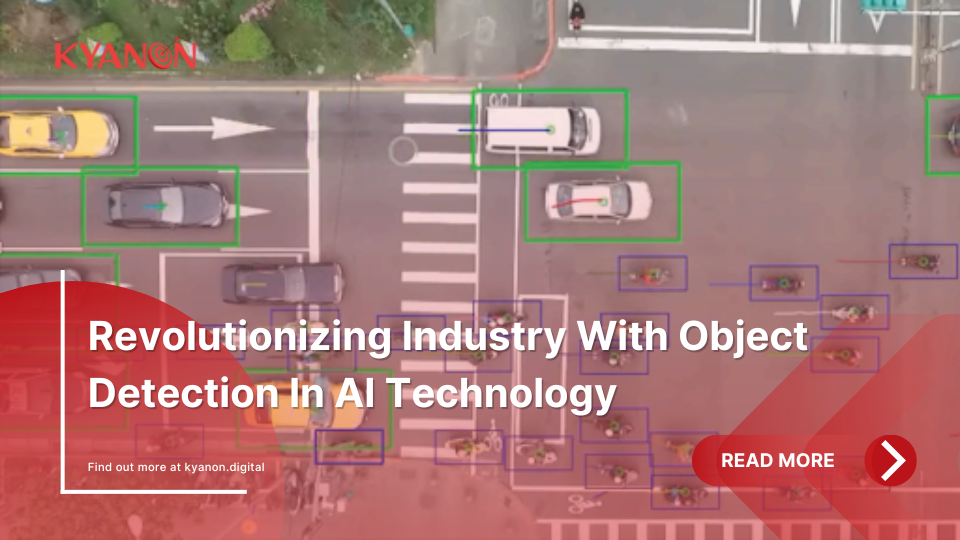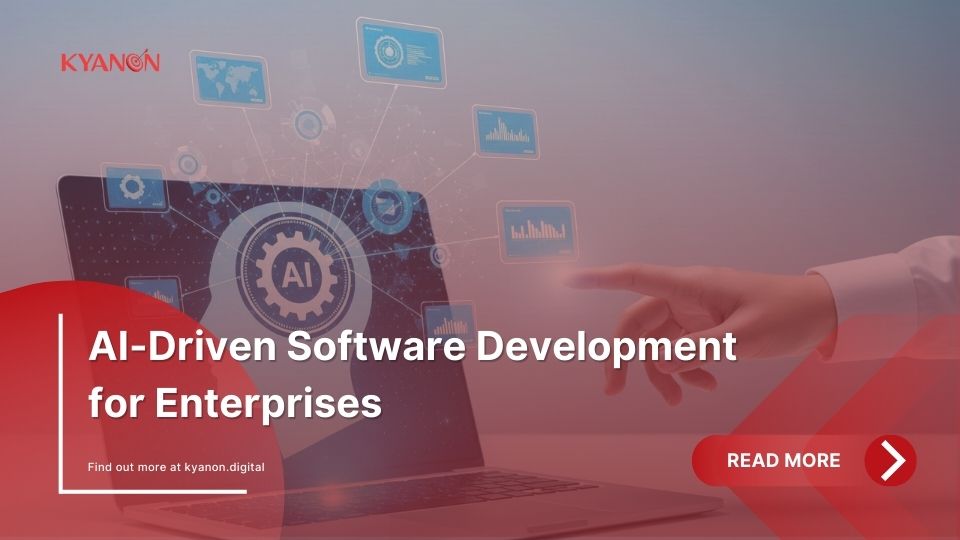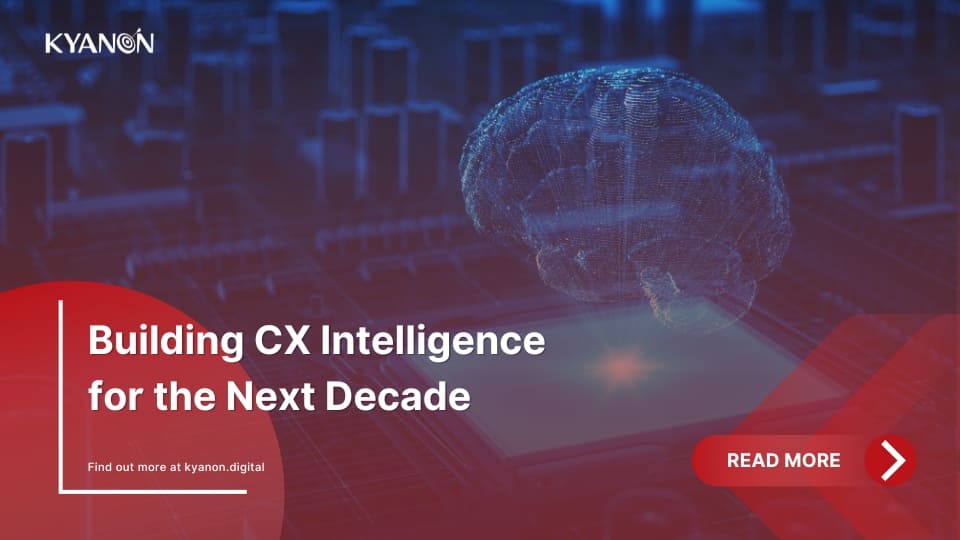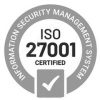In today’s rapidly evolving technological landscape, artificial intelligence (AI) is reshaping industries, and Kyanon Digital stands at the forefront of this transformation. With extensive expertise in AI and a strong track record of successful collaborations, Kyanon Digital continues to push the boundaries of innovation. Recently, Kyanon Digital co-hosted the insightful webinar “Revolutionizing Industry with Object Detection” alongside Vietnam Datathon, a part of the Bow & Arrow Tech Talks series of Kyanon Digital, bringing together industry experts to discuss the power of object detection in various applications.
The webinar featured two prominent speakers: David Lapetina, VP of Engineering & Technology at Kyanon Digital, who shared the applications of cutting-edge AI technologies across various industries, and Dr. Pham The Bao, Associate Professor and Dean of the Faculty of Information Science at Sai Gon University, who provided an academic perspective on AI advancements.
For business leaders, understanding object detection is crucial, as this technology holds immense potential for optimizing processes, enhancing automation, and driving competitive advantages across industries.
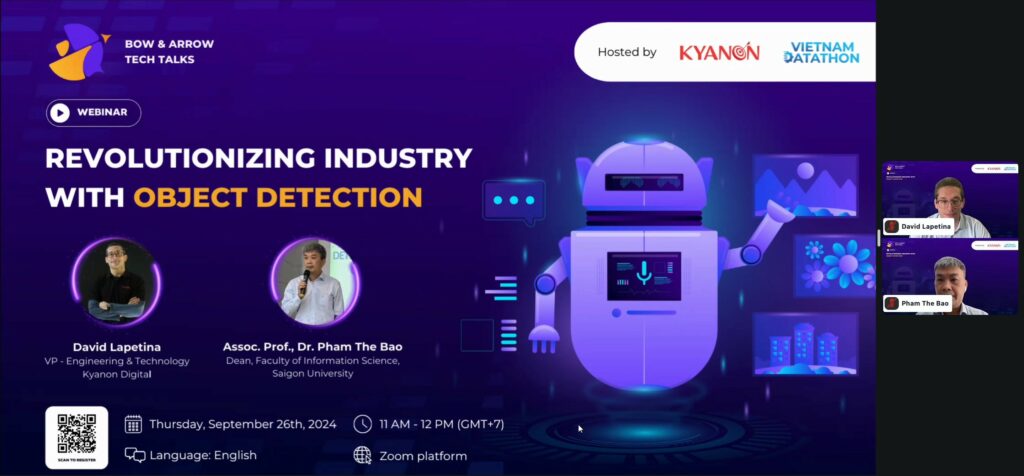
1. Understanding Object Detection
Object detection is a key technology within the field of Artificial Intelligence (AI) that enables machines to identify and classify objects within images or videos. By using advanced algorithms, systems can accurately detect and track objects, making this a cornerstone of AI-driven innovations. Its significance lies in its ability to transform data into actionable insights, allowing for enhanced decision-making and automation.
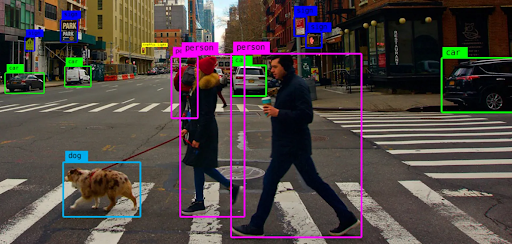
Across industries, from manufacturing and retail to healthcare and transportation, object detection plays a pivotal role in streamlining operations. It drives efficiency, reduces errors, and opens new possibilities for innovation, making it essential for organizations aiming to stay competitive in the digital age.
| Classical Image Processing | Machine Learning |
Deep Learning |
| Template Matching
Hough Transform Canny Edge Detector |
Viola-Jones
HOG + SVM DPM |
R-CNN, Fast/Faster R-CNN
YOLO, SSD DETR |
| Simple and easy to implement
Useful for detecting edges, corners, and basic shapes |
Can handle more complex objects
Viola-Jones is fast for specific tasks (face detection) |
Highly accurate and can detecting complex objects
Real-time detection State-of-the-art performance |
| Simple object recognition in controlled environments
Line and shape detection in industrial quality control |
Face detection
Human detection and pedestrian tracking |
Autonomous vehicles, surveillance, and robotics
Real-time video analytics General-purpose object detection |
Evolution of Object Detection Techniques
2. Applications of Object Detection Across Industries
2.1. Smart Retail
- Use Cases
- Automated checkout: Object detection identifies products in the cart or at the checkout counter, speeding up the payment process without the need for barcodes (e.g., Amazon Go).
- Inventory management: Cameras monitor shelves and notify staff when items are running low or out of stock, reducing manual checks.
- Customer behavior analysis: Object detection tracks customer movement in the store to analyze shopping patterns, optimize layouts, and enhance customer experience.
- Complexity
- High – Requires integration with existing retail systems, real-time data processing, and handling large volumes of data for accurate analysis.
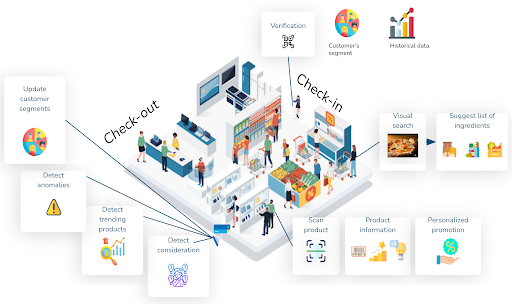
Smart Retail example
2.2. Warehouse Management
- Use Cases
- Real-time inventory tracking: Object detection cameras track items in the warehouse, updating inventory counts in real-time and reducing discrepancies.
- Automated restocking: Robots or drones use object detection to locate and restock items, reducing manual labor and speeding up the process.
- Damage detection: Object detection systems identify damaged goods during storage or transport, preventing defective products from reaching customers.
- Complexity
- High – Involves integrating object detection with warehouse management systems and ensuring real-time processing capabilities.
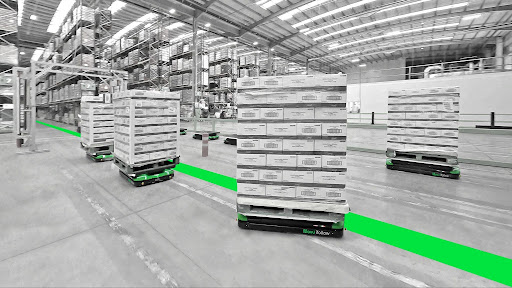
Smart Automation example
2.3. Safety and Security
- Use Cases
- Hazard detection: Cameras equipped with object detection can identify potential safety hazards (e.g., spills, loose objects) and trigger alerts to prevent accidents.
- PPE compliance: Object detection ensures workers are wearing personal protective equipment (e.g., helmets, gloves) and sends alerts when non-compliance is detected.
- Machinery monitoring: Object detection can monitor machinery for signs of wear, overheating, or other issues that might lead to accidents.
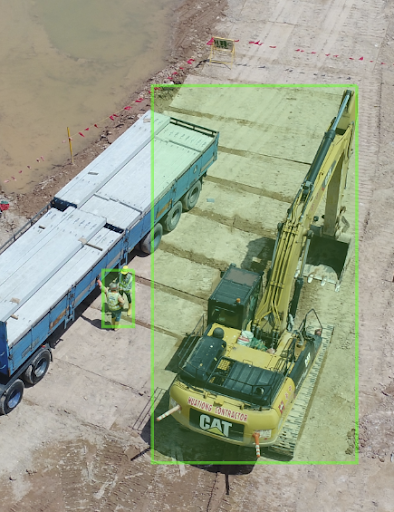
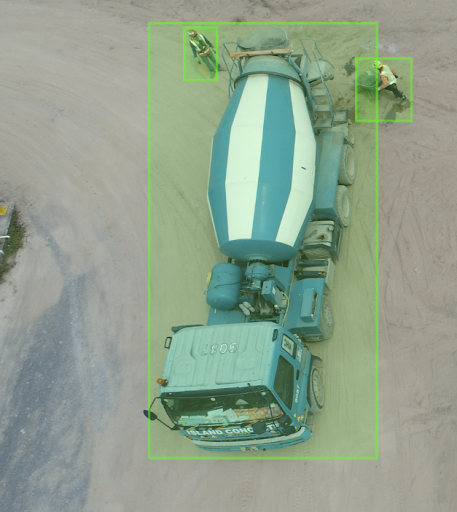
Construction machines detection
- Complexity
- Medium to High – The system must be trained on specific safety scenarios and integrated into existing safety protocols, which can require customization.


Barricade detection
2.4. Quality Control
- Use Cases
- Automated inspection: Object detection can identify defects in products on the production line, such as surface scratches, incorrect assembly, or missing parts.
- Consistency checks: Ensure products meet exact specifications by comparing real-time images to a standard model.
- Non-destructive testing: Visual inspection allows for quality checks without physically interacting with the product.
- Complexity
- Medium – Object detection needs to be finely tuned for specific defect types, but it’s easier with today’s AI tools. Requires integration with existing quality control systems.
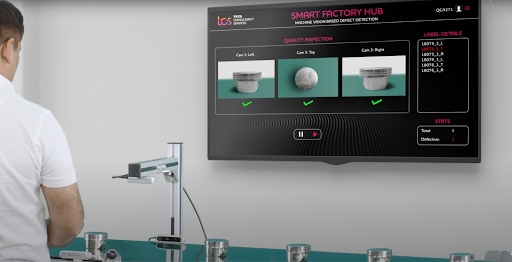
Quality control via Computer Vision
2.5. Predictive Maintenance
- Use Cases
- Monitoring equipment wear and tear: Cameras monitor machine components for signs of degradation, such as cracks or rust, allowing for maintenance before a breakdown.
- Analyzing machine components: Object detection can visually inspect machine parts, ensuring they are in good condition and identifying potential failures.
- Reducing downtime: By predicting when maintenance is needed, companies can avoid unplanned shutdowns and extend equipment life.
- Complexity
- Medium – Requires a well-trained model for specific machine components and integration with maintenance systems, but it’s increasingly feasible with pre-built solutions.
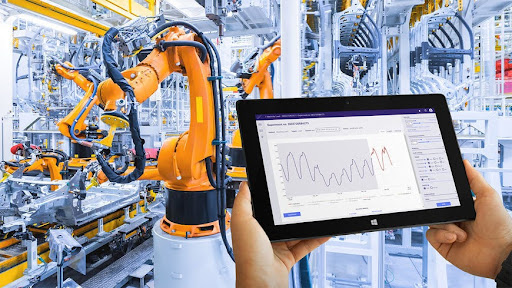
Predictive maintenance system monitoring of a robot
2.6. Farming
- Use Cases
- Crop Health and Nutrition Monitoring: Object detection systems use drones or cameras to monitor crops for signs of nutrient deficiencies, overwatering, or pests. Early detection helps optimize fertilizer and water usage.
- Disease Detection: Object detection can identify early signs of diseases in plants (e.g., leaf discoloration, fungal growth) and notify farmers to take action before the disease spreads, reducing crop loss.
- Animal Behavior Analysis: In livestock farming, object detection is used to monitor animal behavior, such as feeding patterns, movement, and health indicators. Early detection of abnormal behaviors can help prevent disease outbreaks and improve animal welfare.
- Complexity
- Medium – While setting up object detection systems in farming requires initial investment in drones, cameras, and AI models, pre-built solutions are increasingly available. Integration with existing farm management systems can streamline the process.

Detection of diseases on plants
Transform your ideas into reality with our services. Get started today!
Our team will contact you within 24 hours.
3. Considerations and Challenges when applying Object Detection
While object detection offers immense potential, there are several important considerations and challenges that businesses must address to fully harness its capabilities.
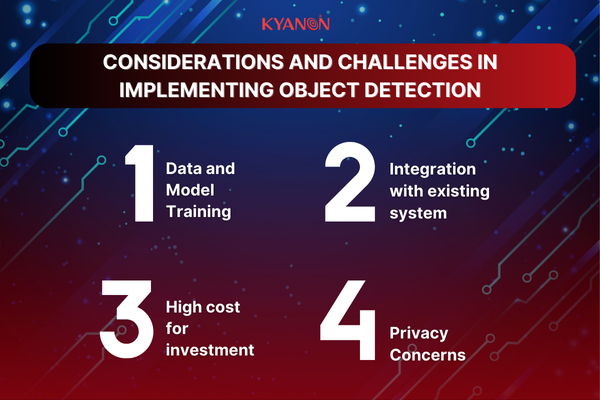
3.1. Data and Model Training
- Need for large, high-quality datasets to train object detection models effectively
- Need to address potential issues like bias in data
3.2. Integration
- Integrating object detection with existing systems, such as legacy software and hardware can be challenging
- Including the change management (organization, training, etc)
3.3. Cost
- Initial investment required for technology and infrastructure can be high
- The ROI over time must be aligned with the strategic objectives of the company
3.4. Privacy Concerns
- Especially in retail, customer privacy needs to be balanced with surveillance and data collection
4. Future Trends in Object Detection
As object detection technology continues to evolve, several emerging trends are set to shape its future and broaden its applications across industries.

- Advancements in AI: Expect ongoing improvements in model accuracy, speed, and versatility as AI continues to evolve
- Edge Computing: Processing data on devices (rather than in the cloud) reduces latency and enables real-time decision-making, crucial for industries like manufacturing
- Industry 4.0: With the development of IoT, 5G, and smart factories, contributing to fully automated and connected systems, it is a new era for Industries
- Sustainability: Object detection can help industries reduce waste, optimize resources, achieve sustainability goals and to be balanced with the energy consumption
5. Conclusion
In conclusion, object detection is a powerful tool that is transforming industries by enhancing automation, improving accuracy, and driving operational efficiencies. Its impact is undeniable across sectors, making it a vital technology for businesses looking to stay ahead in an increasingly AI-driven world.
Kyanon Digital remains committed to leading the charge in AI innovation, continuously advancing its expertise and delivering cutting-edge solutions that empower organizations. To further explore how object detection and AI can benefit your business, we invite you to access our resources and engage with Kyanon Digital for expert insights and collaboration opportunities.

